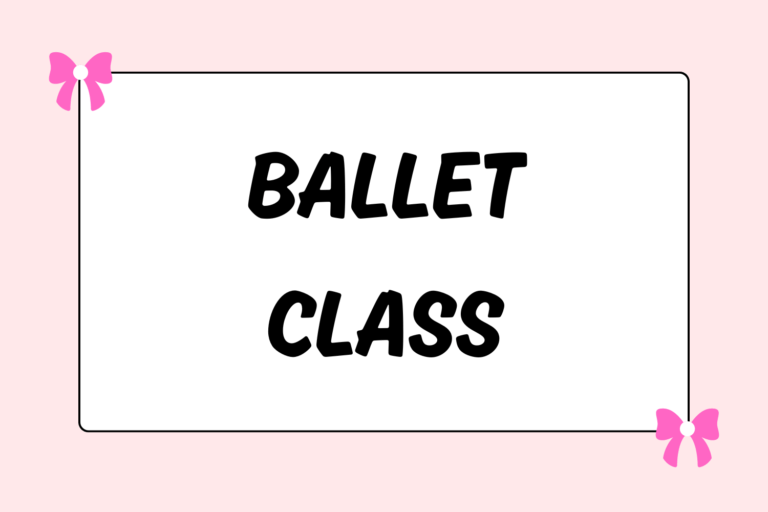Born in Italy, raised in France, cultivated in Russia, and refined in America, ballet is nothing if not an international art form. As such, over the course of more than 300 years, several methods have diverged from the classical vocabulary. These methods are most pronounced in the major schools of each, with the teaching philosophy central to the development of a method’s principle beliefs.
Whether you’re a highly experienced Vaganova ballerina from Russia or an adult dancer beginning classes in the midwestern USA, getting an idea of which methods of ballet came from which country can be an invaluable lesson!
Cecchetti
Developed by Enrico Cecchetti in Russia at the dawn of the 20th century, the Cecchetti method was set on the Imperial Ballet School in St. Petersburg, Russia. Enrico Cecchetti, former dancer turned teacher, structured the method as a means of dividing up the movements of classical ballet into a science. In the Cecchetti method, exercises and combinations are carefully and precisely executed, with a set class regime to be followed for each day.
In addition to the strict and scientific structure designed by Cecchetti, the port de bras and adagios specific to his method remain notable. Cecchetti himself choreographed 40 adagios to be practiced and mastered by his students.
Today, over 80 years after Cecchetti’s death, his method is taught by world-renowned schools such as the National Ballet School of Canada. The method and its examinations are maintained in the USA by the Cecchetti Council of America, with similar councils grading examinations around the world.
Vaganova
Created in Russia in the 1930s by former Imperial ballerina Agrippina Vaganova, the Vaganova method is what most exemplifies Russian ballet today. Following her 19-year career with the Imperial Ballet, Vaganova taught at the Imperial (later Leningrad Choreographic, now Vaganova) Academy in St. Petersburg, Russia. The school has been a feeder for its parent company, the Maryinsky (formerly Kirov) Ballet.
All the principles of Vaganova’s method can be found in her 1948 book titled, “Basic Principles of Classical Russian Dance.” In it she details her teaching method, which is founded on the basis that a dancer must be trained to perform a complete grand pas de deux, and in learning to do everything within it, will then become a great dancer.
Vaganova’s method is focused on a slow, gradual technical procession. Students begin repeating simple tendus and plies, mastering every aspect of these essential elements before moving on. While some criticize the Vaganova method’s slow speed and lack of large movement dynamics, it has produced such great dancers as Irina Kolpakova, Galina Mezentseva, and Maya Plisetskaya. Following the collapse of the Soviet Union and the emigration of Russian dancers, the Vaganova method is taught in various ways around the world.
Balanchine
George Balanchine was born in Russia in 1904 and went on to study ballet at the Imperial Ballet School under Pavel Gerdt. Following his defection from the newly-formed Soviet Union in 1924, Balanchine joined as a choreographer to Diaghilev’s Ballets Russes. In 1934, following Diaghilev’s death, Balanchine opened the School of American Ballet in New York City with the help of financier and arts patron Lincoln Kierstein.
Balanchine’s method brings together elements of traditional, pre-Vaganova ballet training with the neo-classicalism created by Balanchine in the 20th century. Speed is perhaps the most notable characteristic of the method, with students learning to become adept at petit allegro and other lighting dynamics that Balanchine favored in his own choreography. Additionally, a deep plié is emphasized, with students lifting their heels in order to derive more bend and a quicker transition.
Today, the Balanchine method is preserved most purely by the School of American Ballet, alma mater of most New York City Ballet dancers. Students are trained with Balanchine’s principles of speed, efficient movement, and a natural ease of movement en pointe by female students. Musicality is also highly emphasized, in large part due to Balanchine’s history as a musician and his choreographic choices, many of which can be difficult to dance to without a keen sense of rhythm and musicality.
Fun Fact
Though dancers know him as George Balanchine, the founder of American Ballet was born Georgi Balinchivadze.
Bournonville
The basis for Dutch ballet and its relatives, the Bournonville method of ballet was developed by August Bournonville in Denmark in the mid-19th century. Bournonville was both teacher and choreographer, heading the Royal Danish Ballet and creating dozens of ballets for the company while refining his principled method of movement in the company’s associated school.
As the performance stages in Denmark were notoriously tiny, Bournonville’s choreography and subsequently his teaching method were designed to make the most of the small dancing space. Dancers are trained to have exquisite ballon and gentle port de bras, with emphasis placed highly on the épaulment of dancers. Movements are taught to acquire a sense of height rather than to travel, with jumps and turns being largely stationary with their virtuosity.
Today, the Bournonville method is practiced and maintained by the Royal Danish Ballet School in Copenhagen, though descendents of the school have emigrated all over the world to pass Bournonville’s method down to their own students.
Royal Academy of Dance (RAD)
A method founded in London in 1920, the Royal Academy of Dance (RAD) was brought together by pulling representatives of various types of ballet — from Russian to Italian to English — together into one school. Thus, the RAD method symbolizes the union of international ballet into one school, consolidated into one method of teaching.
The method grew its roots in the Royal Ballet School in London under Dame Ninette de Valois, founder of the Royal Ballet. With skillful teaching from former dancers such as Russian ballerina Tamara Karsavina, the school turned out highly-accomplished dancers such as Moira Shearer, Beryl Grey, Darcy Bussell, and Leanne Benjamin.
Today the method is run in a highly-efficient series of levels designed for both the pre-professional and academic ballet dancer, divided into both vocational and non-vocational levels. Each level is taught by an RAD-certified instructor, with students advancing after taking an examination judged by a certified RAD official (often a teacher and former RAD-trained dancer). The method is practiced worldwide, with official RAD members residing in dozens of countries on six continents.
French/Paris Opera School
One of the most fluid methods of ballet, having been overhauled by Rudolf Nureyev in the 1980s, the French method of ballet is largely closed to the rest of the world, its practices not yet spread worldwide. The Paris Opera Ballet School (as it is now titled) was the first ballet school in existence, originally founded by King Louis XIV in the late 17th century. The feeder school for the Paris Opera Ballet, it ran through a highly-qualified staff of former premier dancers and ballerinas.
Following its decline in status and popularity in the second half of the 20th century with emerging rivals ranging from the newborn American ballet scene and neo-classicalist revolution in Europe, the Paris Opera Ballet School hired Soviet defector and famed dancer Rudolf Nureyev as director in the 1980s. What is known today as the French method of ballet came largely from Nureyev, who incorporated his own tastes along with Russian training into the French classical vocabulary.
Included in the hallmarks of French ballet are Nureyev’s particular attentions to musicality, altered tempo, and precision by dancers. The dancers are trained with sobriety, attaining a traditional and classical, ethereal look, while executing steps that are both impressive and virtuously quick. The French method of ballet is not practiced outside of the Paris Opera Ballet School, due in part to its newness and the lack of literature available on any syllabus informally created.
Fun Fact
King Louis XIV was also the first principal dancer; his penchant for ballet was a delight to all in his court.
Different Tendus
Though many methods of ballet have emerged in the past few decades, these main schools of thought are the roots from which they all branch out. Every major company has an association with one of these methods, though not all of its dancers may have been trained in it. The next time you watch a ballet, look for some specific characteristics displayed by the dancers; who knows, you may become an expert on the hallmarks of various methods!





